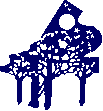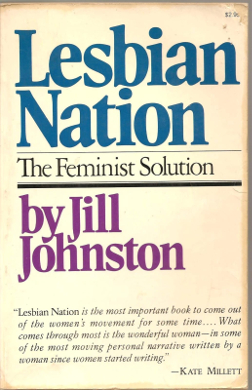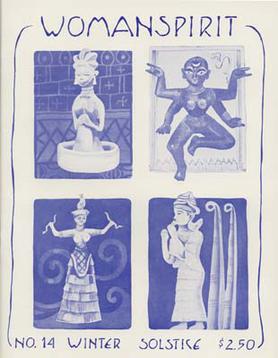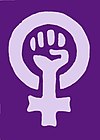Radical feminism is a perspective within feminism that calls for a radical re-ordering of society in which male supremacy is eliminated in all social and economic contexts, while recognizing that women's experiences are also affected by other social divisions such as in race, class, and sexual orientation. The ideology and movement emerged in the 1960s.

The Michigan Womyn's Music Festival, often referred to as MWMF or Michfest, was a feminist women's music festival held annually from 1976 to 2015 in Oceana County, Michigan, on privately owned woodland near Hart Township referred to as "The Land" by Michfest organizers and attendees. The event was built, staffed, run, and attended exclusively by women, with girls, young boys and toddlers permitted.

Lesbian feminism is a cultural movement and critical perspective that encourages women to focus their efforts, attentions, relationships, and activities towards their fellow women rather than men, and often advocates lesbianism as the logical result of feminism. Lesbian feminism was most influential in the 1970s and early 1980s, primarily in North America and Western Europe, but began in the late 1960s and arose out of dissatisfaction with the New Left, the Campaign for Homosexual Equality, sexism within the gay liberation movement, and homophobia within popular women's movements at the time. Many of the supporters of Lesbianism were actually women involved in gay liberation who were tired of the sexism and centering of gay men within the community and lesbian women in the mainstream women's movement who were tired of the homophobia involved in it.
Cultural feminism is a term used to describe a variety of feminism that attempts to revalue and redefine attributes culturally ascribed to femaleness. It is also used to describe theories that commend innate differences between women and men.
Women's music is a type of music base on the ideas of feminist separatism and lesbian-separatism, designed to inspire feminist consciousness, chiefly in Western popular music, to promote music "by women, for women, and about women".
Political lesbianism is a phenomenon within feminism, primarily second-wave feminism and radical feminism; it includes, but is not limited to, lesbian separatism. Political lesbianism asserts that sexual orientation is a political and feminist choice, and advocates lesbianism as a positive alternative to heterosexuality for women as part of the struggle against sexism.
The Feminists was a second-wave radical feminist group active in New York City from 1968 to 1973.
Sarah Lucia Hoagland is the Bernard Brommel Distinguished Research Professor and Professor Emerita of Philosophy and Women's Studies at Northeastern Illinois University in Chicago.

The Furies Collective was a short-lived commune of twelve young lesbian separatists in Washington, D.C., in 1971 and 1972. They viewed lesbianism as more political than sexual, and declared heterosexual women to be an obstacle to the world revolution they sought. Their theories are still acknowledged among feminist groups.

Cell 16, started by Abby Rockefeller, was a progressive feminist organization active in the United States from 1968 to 1973, known for its program of celibacy, separation from men, and self-defense training. The organization had a journal: No More Fun and Games. Considered too extreme by establishment media, the organization was painted as hard left vanguard.
Radical lesbianism is a lesbian movement that challenges the status quo of heterosexuality and mainstream feminism. It arose in part because mainstream feminism did not actively include or fight for lesbian rights. The movement was started by lesbian feminist groups in the United States in the 1950s and 1960s. A Canadian movement followed in the 1970s, which added momentum. As it continued to gain popularity, radical lesbianism spread throughout Canada, the United States, and France. The French-based movement, Front des Lesbiennes Radicales, or FLR, organized in 1981 under the name Front des Lesbiennes Radicales. Other movements, such as Radicalesbians, have also stemmed off of the larger radical lesbianism movement. In addition to being associated with social movements, radical lesbianism also offers its own ideology, similar to how feminism functions in both capacities.
Womyn-born womyn (WBW) is a term developed during second-wave feminism to designate women who were assigned female at birth, were raised as girls, and identify as women. The policy is noted for exclusion of trans women. Third-wave feminism and fourth-wave feminism have generally done away with the idea of WBW.
Feminist views on sexuality widely vary. Many feminists, particularly radical feminists, are highly critical of what they see as sexual objectification and sexual exploitation in the media and society. Radical feminists are often opposed to the sex industry, including opposition to prostitution and pornography. Other feminists define themselves as sex-positive feminists and believe that a wide variety of expressions of female sexuality can be empowering to women when they are freely chosen. Some feminists support efforts to reform the sex industry to become less sexist, such as the feminist pornography movement.

Lesbian Nation: The Feminist Solution is a 1973 book by the radical lesbian feminist author and cultural critic Jill Johnston. The book was originally published as a series of essays featured in The Village Voice from 1969 to 1972.
The Leeds Revolutionary Feminist Group was a feminist organisation active in the United Kingdom in the 1970s and 1980s. While there were a number of contemporary revolutionary feminist organisations in the UK, the Leeds group was 'internationally significant'. The group is remembered chiefly for two reasons. The first is organising the UK-wide ‘Reclaim the Night’ marches in November 1977. The second is the publication of the pamphlet Political Lesbianism: The Case Against Heterosexuality, which advocated political lesbianism. British activist Sheila Jeffreys was closely involved with the group, while UK feminist Julie Bindel has spoken of the group's influence on her, as have many others.
Womyn's land is an intentional community organised by lesbian separatists to establish counter-cultural, women-centred space, without the presence of men. These lands were the result of a social movement of the same name that developed in the 1970s in the United States, Australia, New Zealand, and western Europe. Many still exist today. Womyn's land-based communities and residents are loosely networked through social media; print publications such as newsletters; Maize: A Lesbian Country Magazine; Lesbian Natural Resources, a not-for-profit organisation that offers grants and resources; and regional and local gatherings.

WomanSpirit was a lesbian feminist quarterly founded by Ruth and Jean Mountaingrove and produced collectively near Wolf Creek, Oregon. It was the first American lesbian/feminist periodical to be dedicated to both feminism and spirituality. Many of the contributors to WomanSpirit were, or became, well known within the women's spirituality movement. It had 40 publications, covering topics such as ecology, goddess myths and rituals, feminist theory, and divination. Its submissions included articles, photos, letters, book reviews, artwork, and songs.
Margaret Small is an American lesbian activist and was noted for teaching Lesbianism 101 with Madeline Davis at the State University of New York Buffalo. This is the first lesbianism course in the United States. Small was also a civil rights activist.

Gay separatism is the political belief in and advocacy for gay male separatism. Separatism for gay men has included explicit political calls for men-only spaces; the creation of communes for gay men; and the lived social practice of self-segregation in "gayborhoods."







